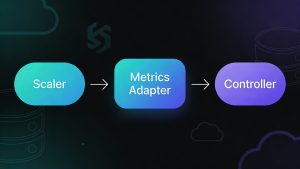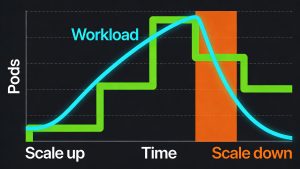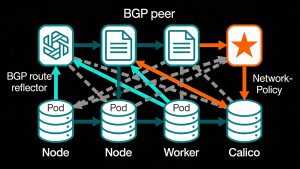In the ever-evolving world of infrastructure as code, Terraform has emerged as a powerful tool for managing and provisioning cloud resources. However, as Terraform projects grow in complexity and scale, maintaining accurate and up-to-date documentation becomes increasingly challenging. This is where the combination of terraform-docs and GitHub Actions comes to the rescue, offering a streamlined solution for automating Terraform documentation.
The Challenge of Terraform Documentation
As organizations expand their use of Terraform, they often find themselves managing numerous modules, each with its own set of variables, outputs, and resources. Keeping the documentation for these modules current can be a time-consuming and error-prone process. Manual updates to README files and other documentation sources are often overlooked or neglected, leading to inconsistencies between the actual code and its documentation.
Enter terraform-docs: A Game-Changer for Documentation
terraform-docs is a powerful utility designed to address the documentation challenges faced by Terraform users. This tool automatically generates comprehensive documentation for Terraform modules by analyzing their input variables, output values, providers, and resources. The result is a structured and readable format that can be seamlessly integrated into README files or other documentation formats.
The Power of Automation with GitHub Actions
While terraform-docs itself is a valuable tool, its true potential is unleashed when combined with GitHub Actions. This integration allows for the automatic generation and updating of Terraform documentation within a GitHub repository, ensuring that documentation always reflects the latest state of the Terraform code.
Setting Up the Automation Workflow
To implement this automated documentation process, a GitHub Actions workflow can be created. Here’s an example of how such a workflow might look:
textname: Generate terraform docs
on:
- pull_request
jobs:
docs:
runs-on: ubuntu-latest
steps:
- uses: actions/checkout@v3
with:
ref: ${{ github.event.pull_request.head.ref }}
- name: Render terraform docs and push changes back to PR
uses: terraform-docs/gh-actions@main
with:
working-dir: .
output-file: README.md
output-method: inject
git-push: "true"
This workflow is designed to trigger on pull requests, ensuring that documentation is updated whenever changes are proposed to the Terraform code.
How the Workflow Operates
- Trigger: The workflow is activated whenever a pull request is opened or updated.
- Code Checkout: The
actions/checkout@v3step ensures that the workflow operates on the latest code from the pull request branch. - Documentation Generation: The
terraform-docs/gh-actions@mainaction generates documentation based on the Terraform files in the specified directory. - README Update: The generated documentation is injected into the README.md file.
- Automatic Commit: If changes are made to the README file, they are automatically pushed back to the pull request branch.
The Benefits of Automated Terraform Documentation
Time Savings
By automating the documentation process, developers can focus their energy on writing and improving Terraform code, rather than manually updating README files. This shift in focus can lead to significant time savings and increased productivity.
Reduced Risk of Errors
Automation eliminates the human error factor from the documentation process. With terraform-docs handling the generation of documentation, there’s no risk of discrepancies between the Terraform code and its documentation due to oversight or forgetfulness.
Enhanced Collaboration
Up-to-date documentation facilitates better collaboration among team members. When a colleague needs to use or review a Terraform module, they can trust that the documentation accurately reflects the current state of the code, even during the pull request phase.
Consistency Across Projects
Automated documentation ensures a consistent format and level of detail across all Terraform modules in a project or organization. This consistency makes it easier for team members to understand and work with different modules.
Best Practices for Implementing Automated Terraform Documentation
Clear Variable Descriptions
While terraform-docs can automatically generate documentation, it’s still important to provide clear and concise descriptions for variables, outputs, and resources within the Terraform code. These descriptions will be included in the generated documentation, enhancing its usefulness.
Regular Code Reviews
Even with automated documentation, regular code reviews are essential. They provide an opportunity to ensure that the generated documentation accurately represents the intended functionality of the Terraform module.
Version Control
Maintain version control of your Terraform modules and their documentation. This practice allows team members to reference specific versions of a module and its corresponding documentation.
Documentation Testing
Consider implementing tests to verify the accuracy and completeness of the generated documentation. This could include checks for required sections, formatting, and the presence of crucial information.
Overcoming Potential Challenges
While automating Terraform documentation offers numerous benefits, it’s important to be aware of potential challenges:
Initial Setup
Setting up the GitHub Actions workflow and configuring terraform-docs may require some initial effort. However, this one-time investment pays off in long-term efficiency gains.
Custom Documentation Needs
Some projects may have unique documentation requirements that go beyond what terraform-docs can automatically generate. In such cases, a hybrid approach of automated and manual documentation may be necessary.
Team Adoption
Introducing a new documentation process may face resistance from team members accustomed to manual methods. Clear communication about the benefits and proper training can help smooth the transition.
Conclusion: Embracing the Future of Terraform Documentation
As Terraform continues to play a crucial role in infrastructure management, the importance of maintaining accurate and up-to-date documentation cannot be overstated. By leveraging the power of terraform-docs in combination with GitHub Actions, organizations can streamline their documentation process, improve collaboration, and ensure consistency across their Terraform projects.
The automated approach not only saves time and reduces errors but also fosters a culture of documentation-as-code, where documentation is treated with the same level of importance as the infrastructure code itself. As teams embrace this methodology, they’ll find themselves better equipped to manage complex Terraform projects, onboard new team members, and maintain a clear understanding of their infrastructure over time.
In the fast-paced world of DevOps and cloud infrastructure, automated Terraform documentation is more than just a convenience—it’s a necessity for teams striving for efficiency, accuracy, and scalability in their infrastructure management practices.
Read more such articles from our Newsletter here.



